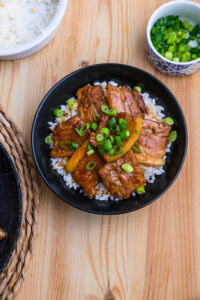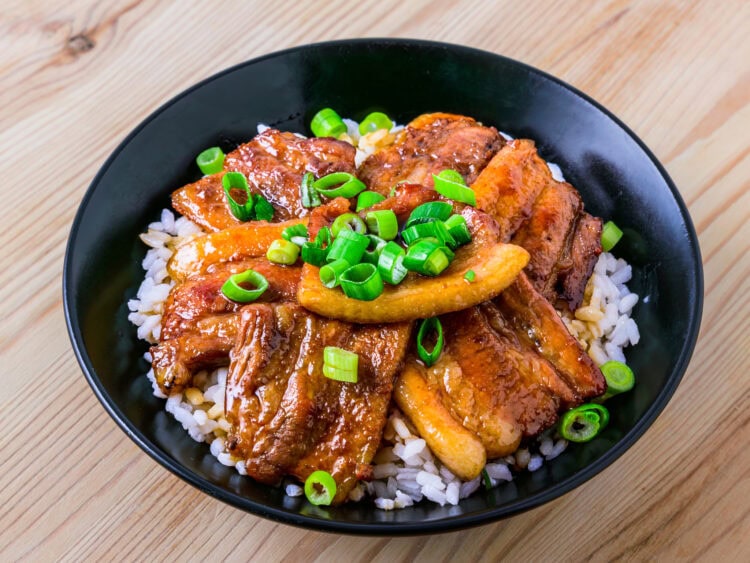A bowl of Japanese rice topped with delicious slices of grilled pork in soy sauce and honey… A must for Donburi lovers!
Rice bowls are a dime a dozen, but I must say that this recipe truly deserves to be shared… If you needed a little something comforting, the Tokashi butadon, with its tender meat and caramelized sauce, is the answer.
Accompanied by a small Miso soup or a japanese coleslaw equivalent, it will be a delight. Plus, you won’t even have to spend forever in the kitchen.

What is Tokashi butadon?
Among all the rice bowl recipes that exist, this one, I can assure you, is unanimously loved by Japanese cuisine enthusiasts.
If you’re a die-hard fan of Donburi, this recipe should definitely interest you.
The Tokashi butadon (十勝豚丼) is indeed a donburi, just like Gyudon, Oyakodon, Katsudon…
In Japan, Butadon is traditionally sold as a bowl of steamed rice, topped with grilled pork slices coated in a delicious sweet-salty sauce

I can tell you that it’s an extremely comforting and relatively filling dish, even for big eaters.
Origins of Tokashi Butadon
Unsurprisingly, Tokashi butadon is a dish originating from the Tokashi region in Hokkaido, an island in northern Japan known for its volcanoes… but also for the quality of its pork.
Pig farming actually began in this region towards the end of the Meiji period, around 1910. That’s kind of how pork, and therefore Butadon, became culinary references there.
It is said that the very origin of Butadon dates back to the Showa period (around 1930) when a restaurant based in Obihiro, still in Hokkaido, served these rice bowls topped with charcoal-grilled pork and sauce.
This dish was then considered as “endurance” food for hard-working laborers and farmers. So believe me when I tell you it’s filling !
Initially, they even used eels instead of pork, but as they were expensive and hard to find, the recipe quickly adapted to this change… which didn’t hinder its success, far from it!
The main ingredients of Butadon
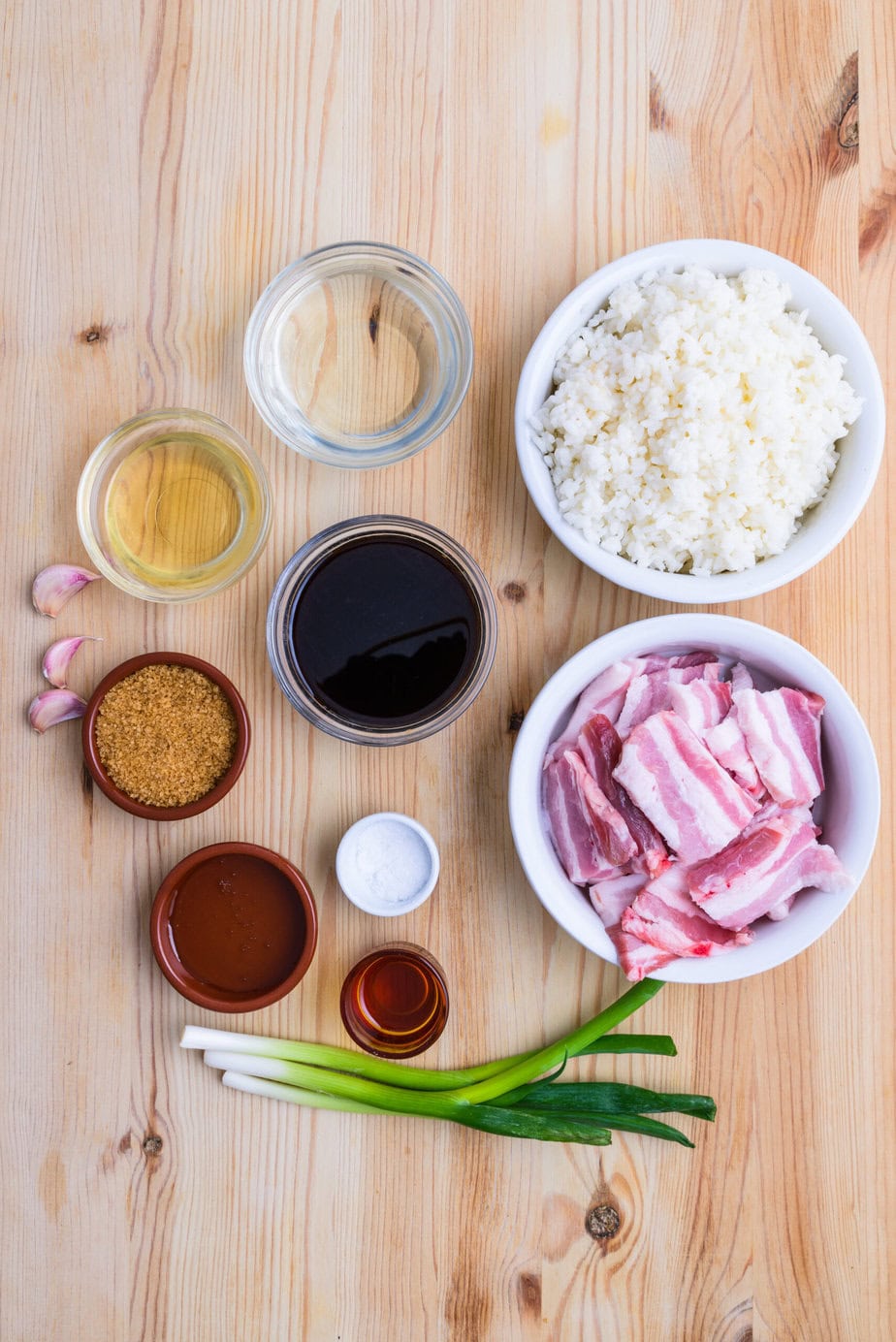
Pork slices: this is the main attraction of the dish. For this recipe, I recommend pork belly, it’s the fatty part of the meat and that’s what makes the dish comforting. With the sauce, the meat is juicy with a slightly smoky taste… a real treat.
Rice: personally, I would use Japanese sushi rice. If you haven’t yet followed my guide to different rice varieties, this one has shorter grains and it’s what I usually recommend for preparing Donburi. When steamed, the grains stick together. It’s easier to eat this way, especially if you’re eating with chopsticks.
Sesame oil: Brings nice nutty notes
Light soy sauce: the Butadon sauce makes all the difference in this recipe. Soy sauce is one of the essentials that give this sweet-salty dimension along with brown sugar and honey
Mirin: here’s another key element of the Butadon sauce. Mirin further enhances the caramelized taste of the sauce.
This is what is most often used for Japanese marinades, such as in the Tsukune recipe and even Katsudon, to stay on the “Donburi” theme! Mirin is sweet, rich in umami and also helps to balance out the salt from the soy sauce.
Sake: it adds a little touch of complexity to the sauce. It’s velvety, smooth, floral, refined… Sake will pair perfectly with the other ingredients in the sauce without making it sweeter. Keep it in your pantry if you like Japanese cuisine, you’ll often need it!
Green onions: a little touch of freshness doesn’t hurt, does it? Adding green onions to your Donburi is never a bad idea.
Tips for a successful Tokashi butadon
Patience is the mother of caramelization. Wait for the sauce to become syrupy before removing it from the heat
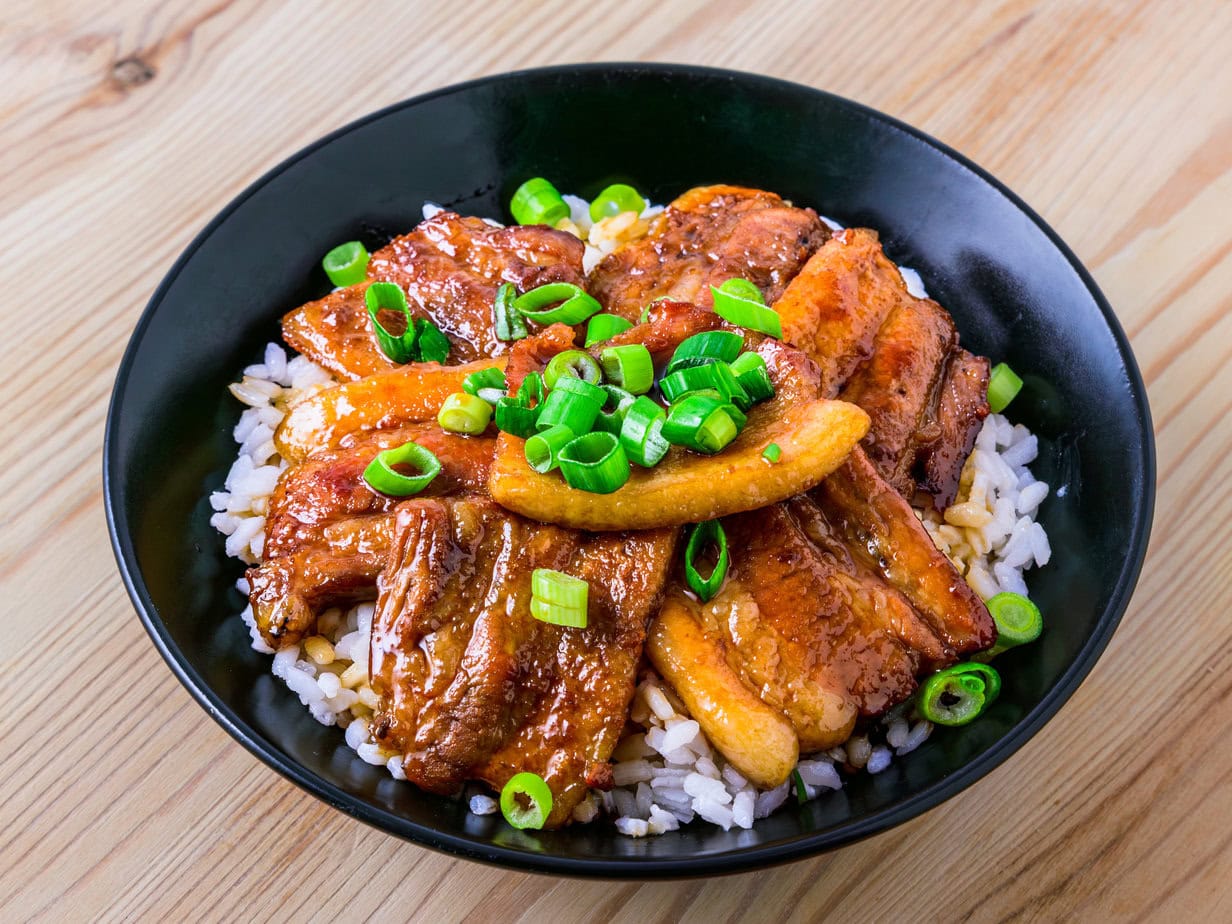
Authentic Tokashi Butadon – Pork Donburi
Ingredients
- 400 g pork belly cut into thin and wide square slices (see photo)
Butadon Sauce
- 1 pinch salt
- 120 ml light soy sauce
- 120 ml of sake
- 60 ml of mirin
- 40 g brown sugar
- 2 tablespoons of honey
- 3 cloves garlic crushed
- 1 teaspoon of sesame oil
For the bowls
- 2 portions of sushi rice cooked
- Finely chopped green onions for garnish
Instructions
- Add the sauce ingredients to a saucepan. Mix well1 pinch salt, 120 ml light soy sauce, 120 ml of sake, 60 ml of mirin, 40 g brown sugar, 2 tablespoons of honey, 3 cloves garlic, 1 teaspoon of sesame oil
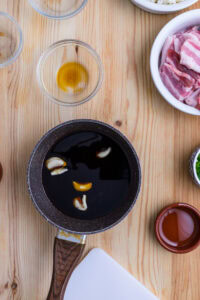
- Bring to a boil over high heat
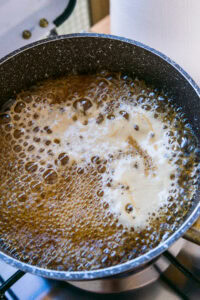
- As soon as it boils, reduce to medium-low heat and thicken. Set aside.
Meat
- Heat a large skillet over medium-high heat with a drizzle of oil until very hot, then add the pork in a single layer (you may need to do this in batches).400 g pork belly
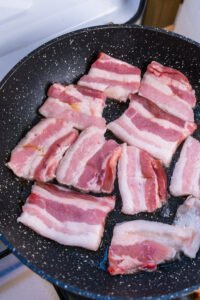
- Fry until the pork is lightly golden on one side, then flip and fry the other side.
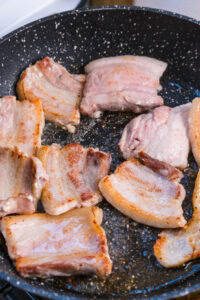
- Set the pork aside on a plate and repeat until all the pork is fried.
- Wipe the oil from the skillet after frying the last portion of pork.
- Add 60 ml of sauce to the skillet and reduce until the sauce is very thick and sticky, then return the pork to the skillet.
- Turn the meat several times until it is glazed by the sauce. Here too, depending on the quantity, you may need to do this in batches
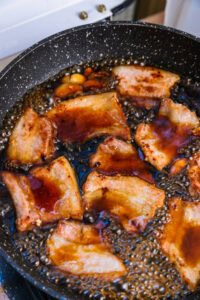
Assembling the bowls
- Add a portion of rice to each bowl.2 portions of sushi rice
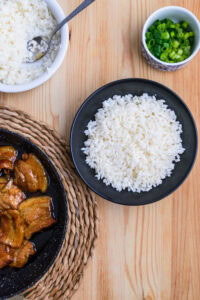
- Pour one or two tablespoons of sauce around the rice.
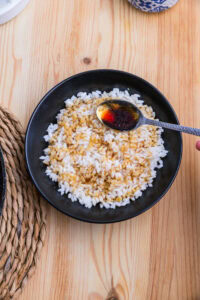
- Arrange the pork on top of the rice
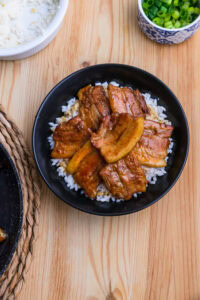
- Garnish with green onions.Finely chopped green onions
